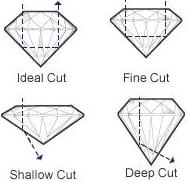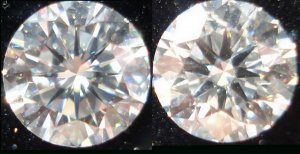Stephan
Ideal_Rock
- Joined
- Feb 13, 2003
- Messages
- 2,917
A lot of Pricescope members sound the alarm when a consumer asks questions about a diamond with a crown angle lower than 34 degrees.
I think you can go much lower and still have a gorgeous diamond, as long as the pavilion has a 40.8/41 degrees angle.
Of course, with a 40.6 degrees pavilion, you shouldn’t go much lower than a 34 degrees crown.
If I had to make a blind buy, I would prefer a 32/41 over a 34/40.6 because I think it is less risky in matter of obstruction issues.
What do you think?
I think you can go much lower and still have a gorgeous diamond, as long as the pavilion has a 40.8/41 degrees angle.
Of course, with a 40.6 degrees pavilion, you shouldn’t go much lower than a 34 degrees crown.
If I had to make a blind buy, I would prefer a 32/41 over a 34/40.6 because I think it is less risky in matter of obstruction issues.
What do you think?







300x240.png)